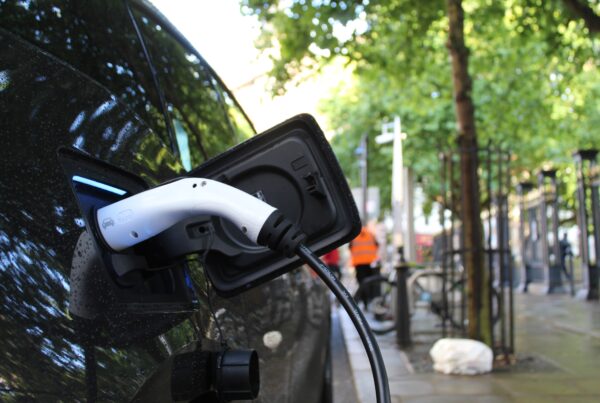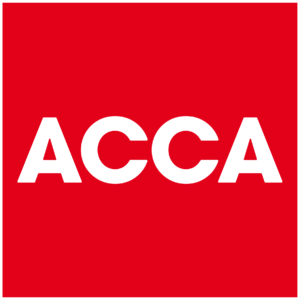Your Tax Advice
At CBHC we can help employers in the Chelmsford area with a variety of tax and employment matters. From PAYE to business motoring, we would be happy to advise you in any way we can.
In this section we consider some of the most important tax issues for employers and employees.
Is your tax code correct?
The purpose of the PAYE system is to collect the right amount of tax from your earnings throughout the course of the year. Your tax code – or sometimes a series of tax codes – is used by your employer to work out how much tax to deduct from your earnings.
However, many people can go for years paying the wrong amount of tax – either too much or, perhaps more worryingly, too little – because they have an incorrect tax code. In particular, they may not have notified the tax office of changes in their circumstances that would affect their tax position, such as a change in jobs or acquiring or losing the benefit of a company car, or they may have started or stopped investing in a personal pension plan.
It is important that we check your PAYE code now, because it is much easier to rectify mistakes before the tax year ends. As a first step, though, you can look at your salary slip to see which code is currently being applied.
The letter in the code tells us whether your code includes one of the standard allowances, and you can see if this is right for your circumstances:
L – includes the basic personal allowance
N – taxpayers who are ‘transferors’ of the Marriage Allowance
M – taxpayers who are ‘recipients’ of the Marriage Allowance
T – there is usually an adjustment in your code which requires manual checking by HMRC each year – for example, you might have a tax underpayment being ‘coded out’
K – HMRC may try to increase the tax you pay on one source of income to cover the tax due on another source which cannot be taxed directly – for example, the tax due on your taxable employment benefits might be collected by increasing the amount of tax you would otherwise pay on your company salary. A ‘K’ code applies when the ‘other income’ adjustment reduces your allowances to less than zero – in effect, it means that the payer has to add notional income to your real income for PAYE purposes.
The maximum tax which can be deducted is 50% of the source income.
HMRC will often try to collect tax on other income through your PAYE code but you may prefer to pay the tax through self assessment – contact us, as we can arrange for the adjustment to be removed.
If you are resident in Scotland you will pay Scottish income tax. In such cases your code will start with an ‘S’ to tell your employer to deduct tax using the Scottish income tax bands on your pay.
Dynamic coding
HMRC has now started using information received from employers, such as notification of a new benefit to recalculate employee tax codes in real-time. Where a potential underpayment is identified HMRC will make an in-year adjustment to the code for the current tax year, so-called ‘dynamic coding’, rather than waiting until the following tax year to code out the difference.
Employer loans
Where loans from an employer total more than £10,000 at any point during the tax year, tax is chargeable on the difference between any interest actually paid and interest calculated at the official rate (2.5% from 6 April 2017). Contact us for the latest position.
Expense payments
Expense payments are generally exempt and do not need to be reported to HMRC on a form P11D. However, expense payments can still be subject to review from time to time, including during an employer compliance visit from HMRC.
You may be able to claim tax relief for other expenses you incur in connection with your job, but the rules are fairly restrictive.
An attractive remuneration package might include any of the following:
- Salary
- Bonus schemes and performance-related pay
- Reimbursement of expenses
- Pension provision
- Life assurance and/or healthcare
- A mobile phone
- Optional Remuneration Arrangements (OpRAs)
- Share incentive arrangements
- Trivial benefits in kind (worth no more than £50 each)
- Choice of a company car
- Additional salary and reimbursement of car expenses for business travel in your own car
- Contributions to the additional costs of working at home
- Other benefits including, for example, an annual function costing not more than £150 (including VAT) per head, or long service awards.
Most benefits are fully taxable, but some attract specific tax breaks.
Combining qualifying benefits with a properly arranged salary sacrifice can mean considerable savings for both employer and employee. If you get the package right, it can be very beneficial – especially for those with income of more than £100,000 who will lose their personal allowances. If you fall into this marginal category, please talk to us to find out how we can help.
Contributing to a pension scheme
Employer contributions to a registered employer pension scheme or your own personal pension policies are not liable for tax or NICs.
Please be aware that while your employer can contribute to your personal pension scheme, these contributions are combined with your own for the purpose of measuring your total pension input against the ‘annual allowance’. Further information is provided in this guide.
Travel and subsistence costs
Site-based employees may be able to claim a deduction for travel to and from the site at which they are working, plus subsistence costs when they stay at or near the site.
Employees working away from their normal place of work can claim a deduction for the cost of travel to and from their temporary place of work, subject to a maximum period.
Approved business mileage allowances – own vehicle
| Vehicle | First 10,000 miles | Thereafter |
|---|---|---|
| Car/van | 45p | 25p |
| Motorcycle | 24p | 24p |
| Bicycle | 20p | 20p |
The company car
The company car continues to be an important part of the remuneration package for many employees, despite the increases in the taxable benefit rates over the last few years.
Employees and directors pay tax on the provision of the car and on the provision of fuel by employers for private mileage. Employers pay Class 1A NICs at 13.8% on the same amount.
This is payable by the 19 July following the end of the tax year.
The amount on which tax and Class 1A NICs are paid in respect of a company car depends on a number of factors. Essentially, the amount charged is calculated by multiplying the list price of the car, including most accessories, by a percentage. The percentage is set by reference to the rate at which the car emits CO2 – please see the table to the right for the 2018/19 rates.
Pooling your resources
Some employers find it convenient to have one or more cars that are readily available for business use by a number of employees. The cars are only available for genuine business use and are not allocated to any one employee. Such cars are usually known as pool cars. The definition of a pool car is very restrictive, but if a car qualifies there is no tax or NIC liability.
| CO2 emissions (g/km) | Appropriate percentage | |
|---|---|---|
| Petrol % | Diesel %* | |
| 0 – 50 | 13 | 17 |
| 51 – 75 | 16 | 20 |
| 76 – 94 | 19 | 23 |
| 95 – 99 | 20 | 24 |
| 100 – 104 | 21 | 25 |
| 105 – 109 | 22 | 26 |
| 110 – 114 | 23 | 27 |
| 115 – 119 | 24 | 28 |
| 120 – 124 | 25 | 29 |
| 125 – 129 | 26 | 30 |
| 130 – 134 | 27 | 31 |
| 135 – 139 | 28 | 32 |
| 140 – 144 | 29 | 33 |
| 145 – 149 | 30 | 34 |
| 150 – 154 | 31 | 35 |
| 155 – 159 | 32 | 36 |
| 160 – 164 | 33 | 37 |
| 165 – 169 | 34 | |
| 170 – 174 | 35 | |
| 175 – 179 | 36 | |
| 180 and above | 37 | |
* Diesel cars that are registered on or after 1 September 2017 and meet Euro 6d emission standard are exempt from the 4% supplement.
Car – fuel only advisory rates
| Engine size | Petrol | Diesel | LPG |
|---|---|---|---|
| Rate per mile | Rate per mile | Rate per mile | |
| 1400cc or less | 12p | 10p | 7p |
| 1401 – 1600cc | 15p | 10p | 9p |
| 1601 – 2000cc | 15p | 12p | 9p |
| Over 2000cc | 22p | 13p | 13p |
Rates from 1 September 2018 and are subject to change. Note the advisory fuel rates are revised in March, June, September and December. Please contact us for any updated rates.
Mileage allowance vs free fuel
A frequently asked question is: would I be better off giving up the company car and instead claiming mileage allowance for the business travel I do in a car that I buy myself? The rule of thumb answer to this is that you are more likely to be better off if your annual business mileage is high.
Another frequent question is: would I be better off having my employer provide me with fuel for private journeys, free of charge, and paying tax on the benefit, or bearing the cost myself? In this case, the rule of thumb answer is that you are only likely to be better off taking the free fuel if your annual private mileage is high. However the cost to the employer of providing this benefit is likely to be high.
Every case should be judged on its own merits, and considered from both the employee’s and the employer’s point of view. While cost is an important factor, it is not the only one. As an employee, using a company car removes the need to worry about bills or the cost of replacement. As an employer, running company cars allows you to retain control over what may, for your business, be key operating assets.
Fuel for private travel
If your employer provides fuel for any private travel, there is a taxable benefit, calculated by applying the same percentage used to calculate the car benefit to the fuel benefit charge multiplier of £23,400.
You can avoid the car fuel charge either by paying for all fuel yourself and claiming the cost of fuel for business journeys at HMRC’s fuel only advisory rates, or by reimbursing your employer for fuel used privately using the same rates.
Considering a company van
Many employers and employees have benefitted from significant savings by replacing company cars with employee-owned cars part-funded by mileage allowances at HMRC rates. Where a company vehicle is still appropriate, a van rather than a car is worth considering.
Unrestricted use of a company van results in a taxable benefit of £3,350, with a further £633 benefit if free fuel is also provided. Limiting the employee’s private use to only home to work travel could reduce both figures to zero.
Case Study
Olivia is an owner-director. For her company car she had chosen one with a list price of £25,785. The car runs on petrol and emits CO2 at a rate of 148g/km.
Olivia’s company is successful and she pays tax at 45%. Her 2018/19 tax bill on the car is therefore £3,481 (£25,785 x 30% x 45%). Olivia’s company will pay Class 1A NICs of £1,067 (£25,785 x 30% x 13.8%).
The company also pays for all of Olivia’s petrol. Because she does not reimburse the cost of fuel for private journeys, she will pay tax of £3,159 (£23,400 x 30% x 45%) and the company will pay Class 1A NICs of £969 (£23,400 x 30% x 13.8%).
The total tax and NIC cost is £8,676. Furthermore, as well as paying for the fuel, the company will also need to pay a gross amount of over £12,528 to provide Olivia with the funds to pay the tax.
When employers’ national insurance is taken into account, the gross cost before tax relief of funding Olivia’s tax and the NIC liabilities will be over £14,257.
Childcare schemes
The government has introduced a new Tax-Free Childcare (TFC) scheme, which operates via an online childcare account. Existing Employer-Supported Childcare (ESC) was set to be closed to new entrants from 6 April 2018, with existing recipients being able to choose to remain in the scheme for as long as their employer continued to provide it, or move to the new TFC scheme. However, the April deadline has subsequently been extended by a minimum additional six months.
ESC, such as childcare vouchers, may be offered in addition to employees’ pay or as a reduction in pay (commonly known as salary sacrifice), enabling them to reduce the cost of childcare.
Under the new TFC scheme, relief is given at 20% of the costs of childcare up to a total of childcare cost of £10,000 per child per year. The scheme is worth a maximum of £2,000 per child (£4,000 for a disabled child). All children under 12 years old are eligible (or up to 17 for children with disabilities), but parents must meet certain eligibility criteria.
Your next steps: contact us to discuss…
- PAYE and payroll issues
- Ensuring you have the correct PAYE code
- Putting together an attractive and tax-efficient remuneration package
- Cutting the cost of company cars, and reviewing the alternatives
- Minimising NIC costs and understanding the tax implications of company cars
If you’re in the Chelmsford area and would like advice on tax planning strategies for your business, including tax and employment issues, please contact CBHC.
For tailored advice on how to best manage your personal and business finances, get in touch with us today and find out about how CBHC can help you do more with your money.








